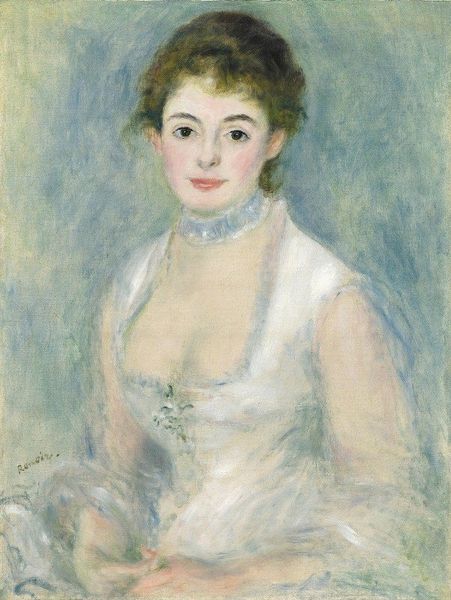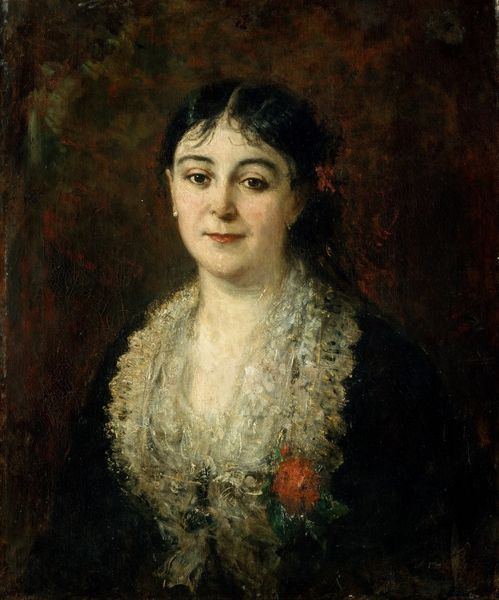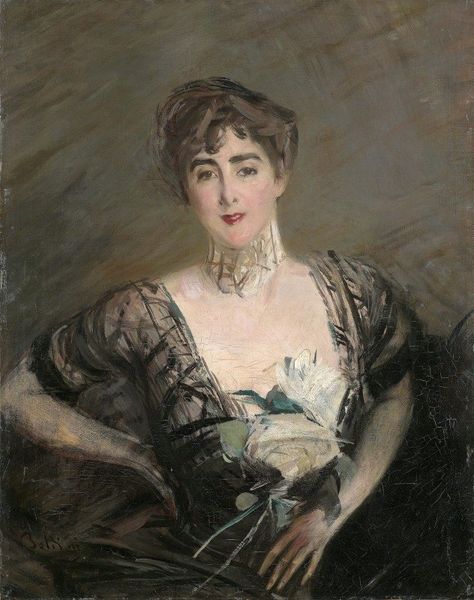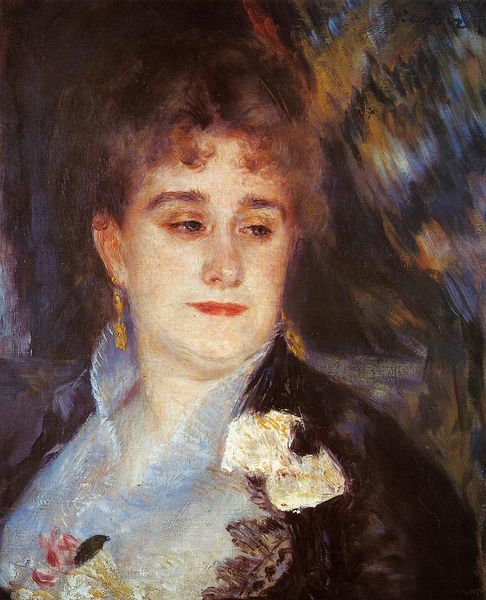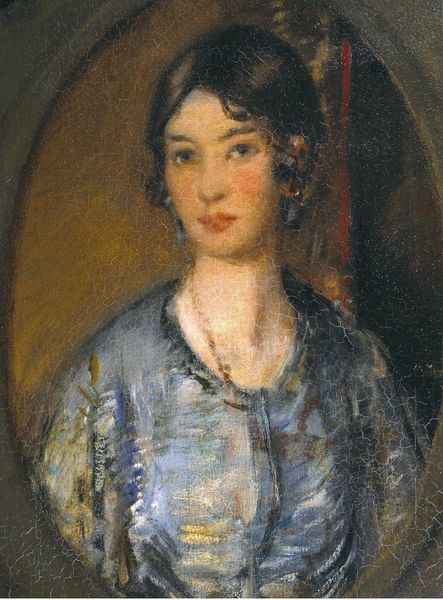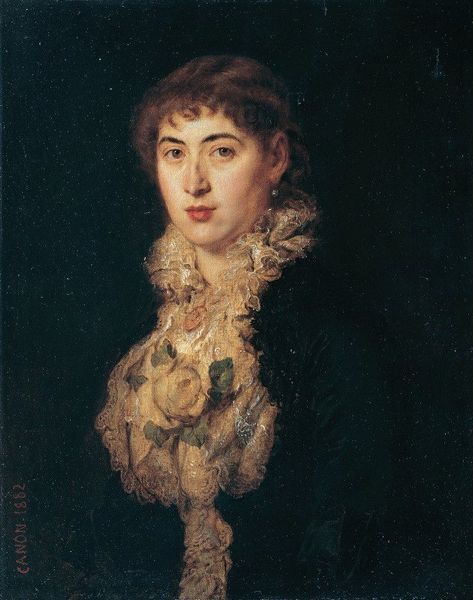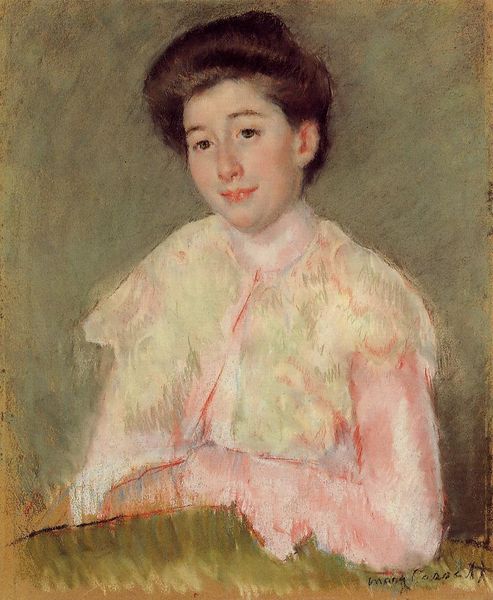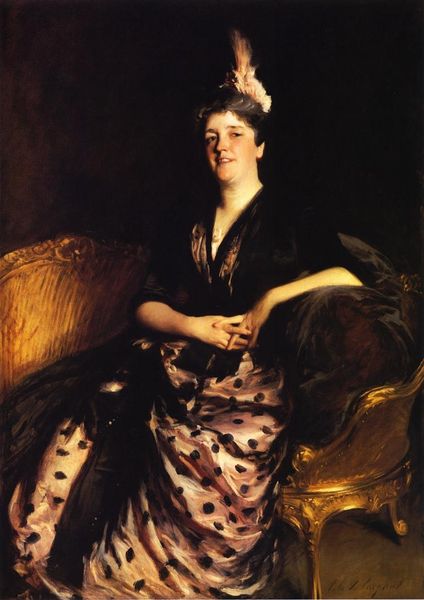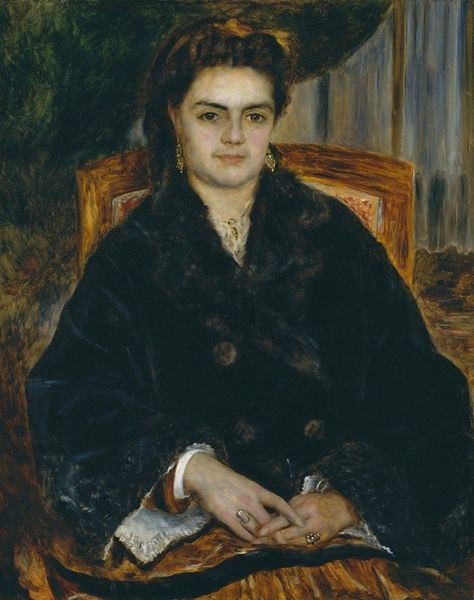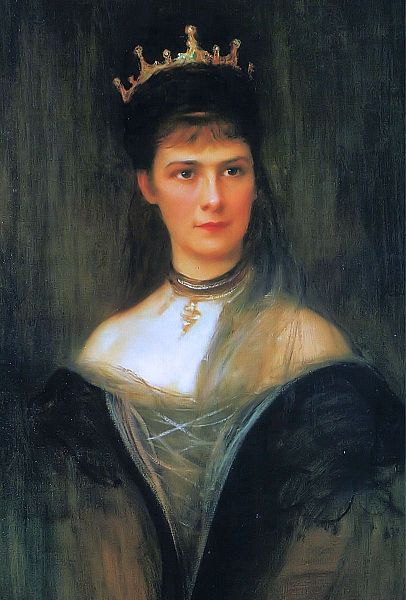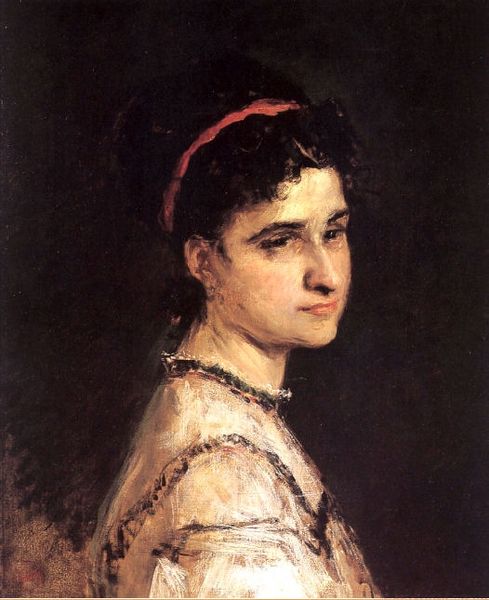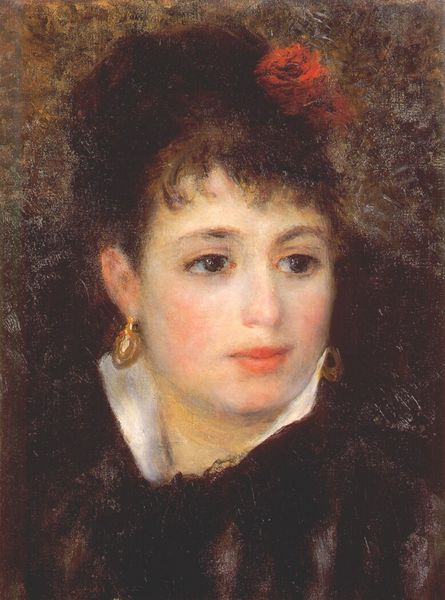
painting, oil-paint, impasto
#
portrait
#
self-portrait
#
painting
#
impressionism
#
oil-paint
#
impasto
Copyright: Public domain
Editor: Renoir’s “Lady in a Black Dress,” created in 1876, is really captivating. There's something about the soft brushstrokes and the woman's wistful gaze that feels incredibly intimate. I wonder, what does this painting whisper to you? Curator: Ah, yes! The whispers… Renoir was such a master of suggestion. It's not just a lady in a black dress; it’s a fleeting moment caught in oil paint. Do you notice how the impasto technique – that thick, almost sculptural paint application – gives her dress a real presence? The textures almost seem to dance. Editor: They really do. Especially the frills on the sleeves! Curator: Exactly! And those soft, muted colours! This isn’t photographic realism, is it? Instead, it is more about the impression of light, a subtle movement, capturing the atmosphere of a person rather than precise details. Now, why do you think Renoir might have been drawn to that particular atmosphere? Editor: Hmm, maybe he wanted to capture a feeling of quiet reflection? She does seem a bit melancholy. Curator: Perhaps. Or maybe she’s simply pondering the next party she’ll attend! Ultimately, that's the magic. These impressionist portraits become less about objective truth, and more about the experience of perceiving it, wouldn't you agree? What feeling does her gaze evoke for you, for instance? Editor: Now I see what you mean about atmosphere! It is more ephemeral. Curator: Absolutely. Editor: It feels like he wasn't just painting a woman, but painting the way a woman feels. I came to appreciate Renoir’s mastery of texture to evoke the passage of time. Curator: Wonderful. Next, shall we try to capture time itself?
Comments
No comments
Be the first to comment and join the conversation on the ultimate creative platform.
